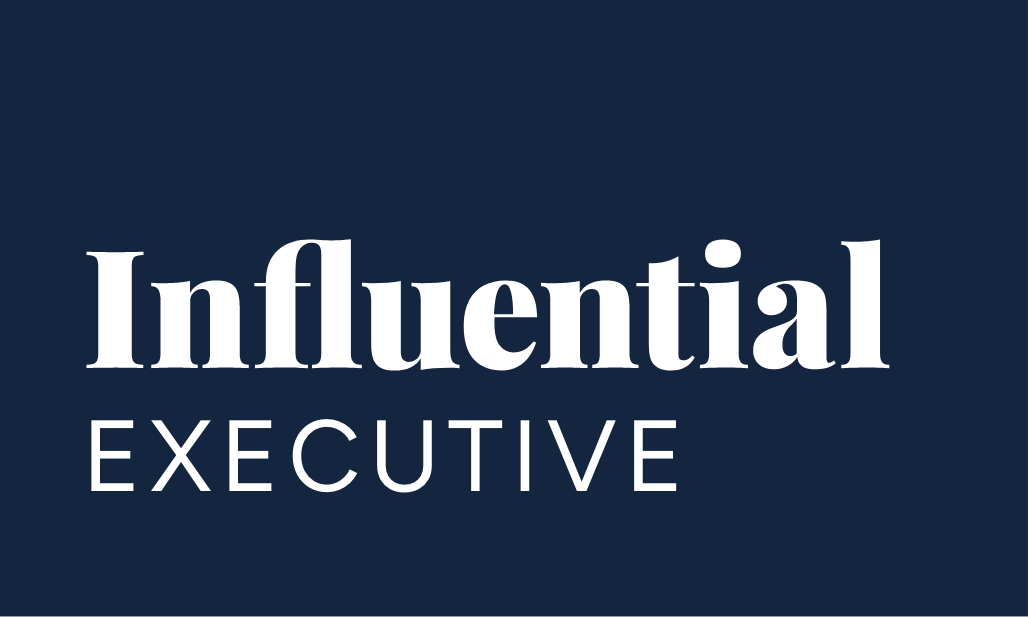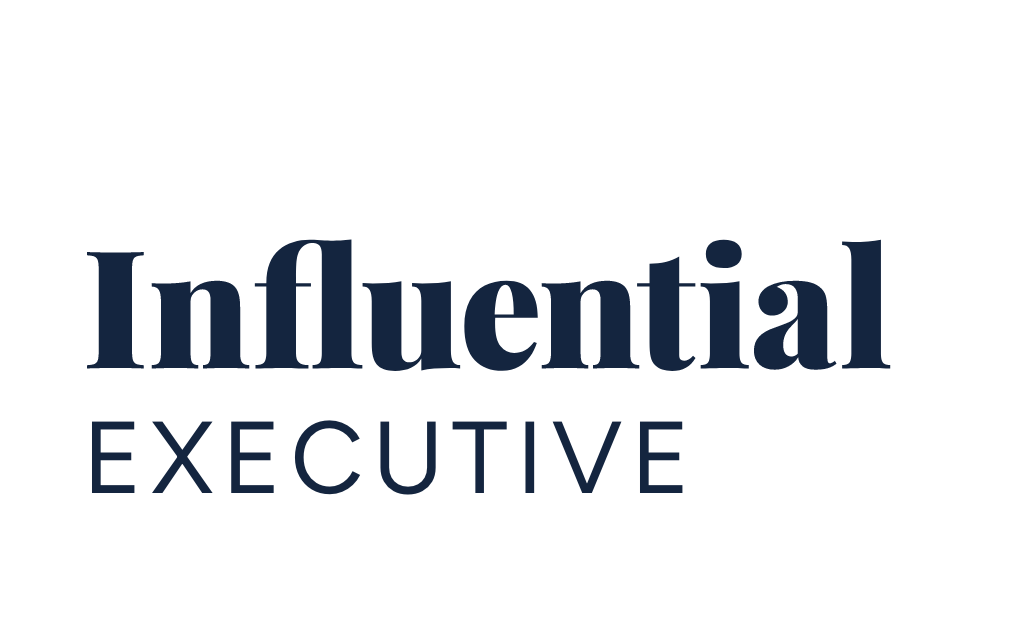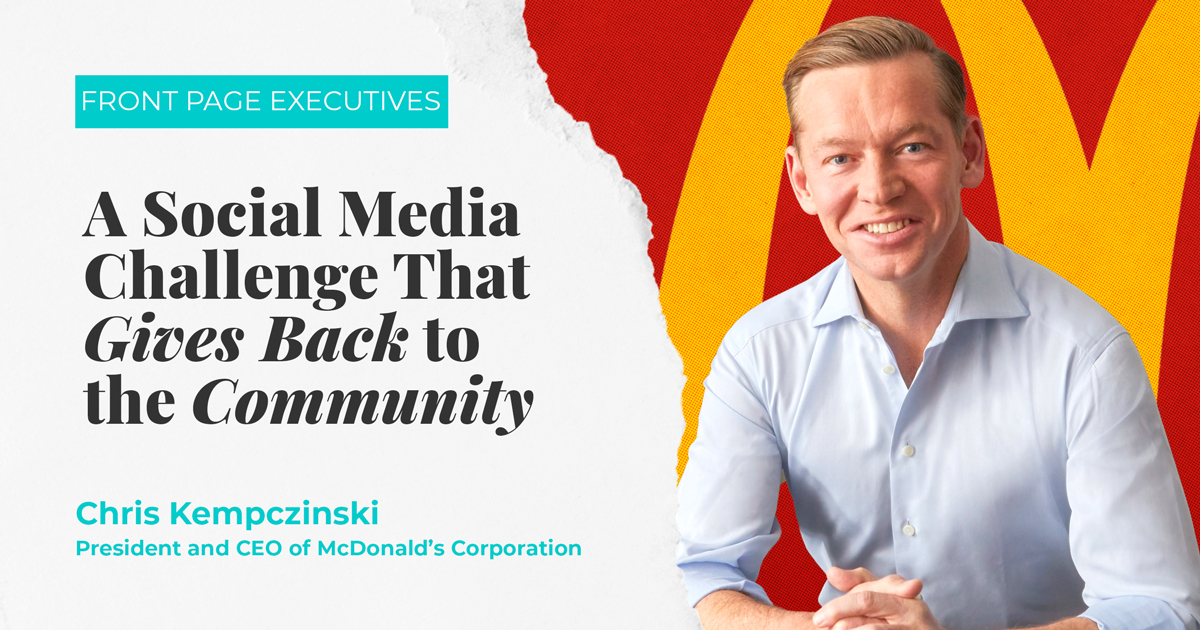For executives who have written articles for third-party publications, sharing a link to their work on social media is an effective way to draw attention to their content. In many cases, these articles are often important company announcements that are delivered by an individual because the messaging is meant to be more relatable to the reader.
Chris Kempczinski, the President and Chief Executive Officer at McDonald’s Corporation, recently wrote an article for CNN where he discusses the challenging year and how, as a company, McDonald’s will overcome these obstacles. He also announced a new social media challenge, #HereForRMHC, stating that the company will be committing $100 million over five years to the Ronald McDonald House Charities.
In this article, we take a closer look at his LinkedIn profile and analyze the post he made for his article and how he has promoted McDonald’s new social media campaign. We’ll also go over why it’s important for executives to be involved in these social media campaigns and how your brand can use its leadership team in its key announcements.
Social Media Challenge
Many successful social media challenges make use of a unique or branded hashtag. In this case, Kempczinski and McDonald’s are using #HereForRMHC, which refers to the Ronald McDonald House Charities.
The social media challenge incorporates user-generated content and lasts until December 31, 2020. Users can post a photo or video of themselves making the heart symbol with their hands or any other supportive message and McDonald’s will donate $100 in the user’s name.
Users must include the hashtag in their content and by doing so, other people who search for that hashtag will see all of the posts that use the same hashtag. This is part of what makes social media campaigns so effective. Marketers and executives can easily track the hashtag and the content being posted to it. With enough people using the hashtag, there’s a chance that it can gain a spot on a trending hashtag list, with Twitter being a prime example.
One important aspect to keep in mind is that in many cases, branded hashtags should typically be new and shouldn’t have been used by many other people previously. These unique hashtags are tied to a campaign and are used to collect and track online content, rather than used to increase a post’s reach like regular hashtags.
Promoting third-party articles on LinkedIn
On LinkedIn, Kempczinski’s post linked to his CNN article while also explaining the purpose of the social media challenge. Given that the campaign only recently started, his post would have been among the first to use the branded hashtag.
Kempczinski also tagged the RMHC page on LinkedIn, which lets users know that the organization has an online presence. Wherever possible, we always recommend that executives tag relevant people and brands in their posts.
Unlike a social media platform like Twitter, LinkedIn’s in-feed posts allows users to write more content as the character limit is much higher (280 characters for a Tweet on Twitter versus 1,300 characters for a post on a LinkedIn personal account). In his post, Kempczinski effectively positions his company in the first two paragraphs before leading into the final paragraph about the social media challenge.
This in-depth commentary would be more difficult to do on a platform like Twitter. Depending on what type of announcement is made, we recommend that executives carefully consider which social media platform to use.
For example, if a CEO is simply linking to their company’s official statement on its website and is only making a short comment, using Twitter is fine. For executives who want to spend more time writing about a company announcement, we recommend platforms like LinkedIn, Facebook, or Instagram (or using a video format on Twitter).
The brand account for McDonald’s also reshared Kempczinski’s post on its feed. Resharing posts on LinkedIn is an effective way to promote a post made by another user. It also increases the post’s reach, such as exposing the executive to users who may not know they’re on LinkedIn.
A Different Approach on Instagram
Given that Instagram posts can’t populate article links, Kempczinski has correctly taken a different approach on this platform by emphasizing the social media campaign rather than his CNN article.
Since hashtags are important on Instagram, his post’s reach may have been limited since he only used the branded hashtag in his copy. Hashtags are much more diverse on Instagram than on LinkedIn, so we always recommend that executives use at least eight hashtags in their Instagram posts. To learn more about the different types of hashtags, read one of our previous articles on what hashtags executives should use.
Using CEOs to deliver key messaging
Since the campaign only just started, it’s still too soon to see whether or not Kempczinski will be highlighting user-generated content on his feed. However, writing the article and sharing it on his LinkedIn feed are excellent first steps that put the spotlight on his company’s social media challenge.
In his article, Chris Kempczinski makes an important point: “There is no formula a company can use to define its purpose. It has to flow authentically from what a company values, how it acts and what it does in the world.”
One way we have seen brands communicate company values is not just through its social media accounts, but also from its leadership team. When CEOs use social media to discuss company initiatives, this conveys a sense of authenticity since the messaging is coming from an identifiable person.
If your company’s leadership team doesn’t have an online presence yet, now is the time to start setting up a strategic executive social media program. Our team has created a free resource that teaches you how to convert your executives into your company’s most valuable marketing tool. Download your free resource below:
href="#" data-color-override="false" data-hover-color-override="false" data-hover-text-color-override="#fff">Get your executives on social media in 4 easy steps!


